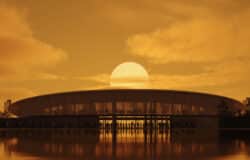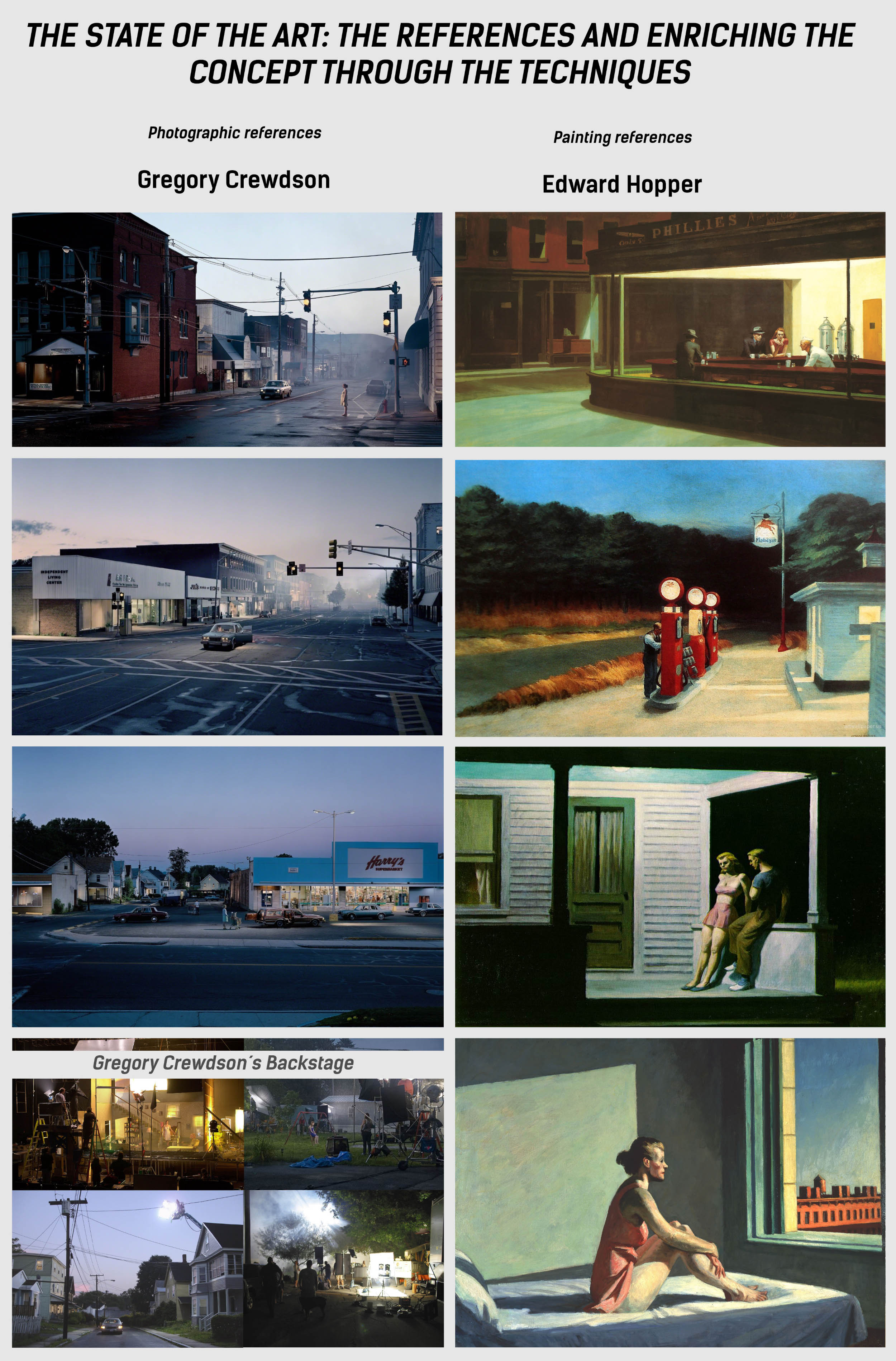THE STATE OF THE ART: THE REFERENCES AND ENRICHING THE CONCEPT THROUGH THE TECHNIQUES
In order to solve my question about going beyond the composition, I started to think about the significance of the references and how they could help me build a complex image supported by the concept that I want to accomplish. I know that my references need to be of great importance, artists whose work have a great amount of detail that are thoughtfully and elaborately construct. It is important to think and analyze recognized artists because they already have a previous knowledge and they have researched the state of the art for creating their own pieces.
THE REFERENCES
Gregory Crewdson is a recognized American photographer known for his “surreal formula, resulting in decidedly cinematic images reminiscent of the films of Steven Spielberg. These photographs have become increasingly spectacular and complex to produce, requiring dozens of assistants, Hollywood-style lighting, and specially crafted stage sets.”-(Guggenheim.org). I chose him as my main reference (Especially his work in Twilight: Photographs by Gregory Crewdson and Beneath the roses) because of his use of lightning that is not only creative, but it makes the particular subjects within the frame to stand out. He has total control over his composition being the light one of his main tools. Besides, even if the themes in his work are surrealistic, he manages to use the lightning in a natural and realistic way.
In addition, he uses photography as tableaux vivants to narrate. His pictures tell a story through a cinematic look in a single frame and his characters are well defined. He is an artist where every object, character, lightning and the composition has a reason to express an idea, an idea that is meaningful to him and that it creates meaning to the observers.
Another reference that I took into account is Edward Hopper (One of Crewdson’s references). “His vision of reality was a selective one, reflecting his own temperament in the empty cityscapes, landscapes, and isolated figures he chose to paint. His work demonstrates that realism is not merely a literal or photographic copying of what we see, but an interpretive rendering.” -(edwardhopper.net) I chose him because of his complex character development and story in a specific moment in place and time.
My references have in common that they use their own vision to show a moment that allows the observer to get involve with the image and interpret it. They all go beyond the composition and their images speak for themselves. They use refined techniques to convey meaning and sense. As Edward Hopper said: “Great art is the outward expression of an inner life of the artist, and this innerlife will result in his personal vision of the world.”














